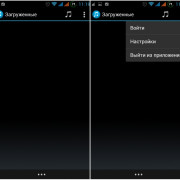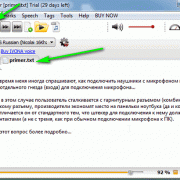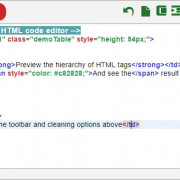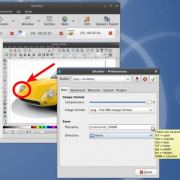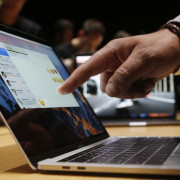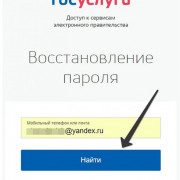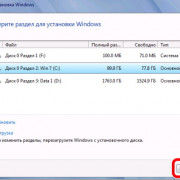Утилиты для удаления вирусов, троянов, червей, шпионских программ и другого вредоносного по (которое не видят антивирусы)
Содержание:
- How do I get spyware?
- Анализ риска
- How do I protect myself from spyware?
- Что умеет хакерское Malware
- Следы Malware в работе вашей системы
- How do I protect myself from adware?
- How can I tell if my iPhone or iPad has malware?
- How Malwarebytes Premium protects you
- An ounce of prevention vs. a pound of cure
- How do I prevent Trojans?
- Функционал Malware
- What do I do if infected?
- Trojanized apps on Android smartphones
- Mac spyware
- Advancements in cybersecurity programs
- ВИДЕО: Сотрудники МЧС взламывают дверь
- Описание Norman Malware Cleaner
- What is the history of malware?
- How do I remove spyware?
- Как проверить реестр на наличие Malware вручную
- How can I protect myself from malware?
- Заключение
How do I get spyware?
Spyware can infect your system in the same ways as any other form of malware. Here are a few of spyware’s main techniques to infect your PC or mobile device.
- Security vulnerabilities, e.g. backdoors and exploits. An exploit is a security vulnerability in your device’s hardware or software that can be abused or exploited to gain unauthorized access. Software vulnerabilities are also known as “software bugs” or just “bugs” for short. Exploits are an unintentional byproduct of hardware and software manufacturing. Mistakes happen and bugs manage to find their way in to even the most polished consumer technology. Backdoors, on the other hand, are put in place on purpose as a way to quickly gain access to your system after the fact. Sometimes the hardware and software makers themselves put the backdoors in. More often than not, however, cybercriminals will use an exploit to gain initial access to your system then install a permanent backdoor for future access.
- Phishing and spoofing. These two threats are often used in tandem. Phishing happens whenever criminals try to get you to perform some sort of action such as clicking a link to a malware-laden website, opening an infected email attachment (aka malspam), or giving up your login credentials. Spoofing refers to the act of disguising phishing emails and websites so that they appear to be from and by individuals and organizations you trust.
- Misleading marketing. Spyware authors love to present their spyware programs as useful tools to download. It might be an Internet accelerator, new download manager, hard disk drive cleaner, or an alternative web search service. Beware this kind of “bait,” because installing it can result in inadvertent spyware infection. And even if you eventually uninstall the “useful” tool that initially introduced the infection, the spyware remains behind and continues to function.
- Software bundles. Who doesn’t love free software (freeware)? Except when it’s a host program that conceals a malicious add-on, extension, or plugin. Bundleware may look like necessary components, but they are nonetheless spyware, which, again, remains even if you uninstall the host application. Making matters worse, you may find that you actually agreed to install the spyware when you accepted the terms of service for the original application.
- Trojans. Broadly speaking, if malware pretends to be something it’s not—that means it’s a Trojan. That said, most Trojans today are not threats in and of themselves. Rather, cybercriminals use Trojans to deliver other forms of malware, like cryptojackers, ransomware, and viruses.
- Mobile device spyware. Mobile spyware has been around since mobile devices became mainstream. Mobile spyware is especially devious since mobile devices are small and users generally can’t see what programs are running in the background as easily as they might on their laptop or desktop. Both Mac and Android devices are vulnerable to spyware. These apps include legitimate apps recompiled with harmful code, straight up malicious apps posing as legitimate ones (often with names resembling popular apps), and apps with fake download links.
“Mobile spyware has been around since mobile devices became mainstream.”
Анализ риска
Пользователи персональных компьютеров порой не считают вредоносные программы серьезной угрозой, хотя часто становятся жертвами кражи учетных данных либо блокировки компьютера с требованием выкупа. Бизнес, наоборот, говорит об инфекциях как о существенной угрозе своей деятельности.
Распространение получают вредоносные программы, попадающие в устройства интернета вещей. Так, компания из Британии создала вирус-вымогатель для термостата, подключенного к Wi-Fi. Получив контроль над оборудованием, он способен опустить температуру до критической отметки и требовать денег. Подробнее о новой вредоносной программе можно прочитать в статье «Вирусы-вымогатели добрались до термостатов.
Нет абсолютной защиты от инфекций, но снизить риск реализации угрозы можно. Для этого необходимо устанавливать новые версии операционных систем, следить за обновлением всех программ, использовать антивирусные решения от надежных производителей, не допускать к ПК посторонних лиц, не открывать подозрительные ссылки, письма и файлы, выполнять ряд других предохранительных мер.
How do I protect myself from spyware?
The best defense against spyware, as with most malware, starts with your behavior. Follow these basics of good cyber self-defense.
- Don’t open emails from unknown senders.
- Don’t download files unless they come from a trusted source.
- Mouse-over links before clicking on them and make sure you’re being sent to the right webpage.
- Use a reputable cybersecurity program to counter advanced spyware. In particular, look for cybersecurity that includes real-time protection.
A quick note about real-time protection. Real-time protection automatically blocks spyware and other threats before they can activate on your computer. Some traditional cybersecurity or antivirus products rely heavily on signature-based technology—these products can be easily circumvented by today’s modern threats.
You should also look out for features that block the delivery of spyware itself on your machine, such as anti-exploit technology and malicious website protection, which blocks websites that host spyware. The premium version of Malwarebytes has a solid reputation for spyware protection.
Digital life comes with ubiquitous dangers in the daily online landscape. Fortunately, there are straightforward and effective ways to protect yourself. Between a cybersecurity suite and commonsense precautions, you should be able to keep every machine you use free from spyware invasions and their malicious intent.
See all our reporting on spyware at Malwarebytes Labs.
Что умеет хакерское Malware
Есть несколько основных разновидностей вредоносных программ:
- Кейлоггеры;
- Удалённое управление (RAT);
- Шифровальщики-вымогатели;
- Майнеры;
- Ботнеты.
Кейлоггеры (key – клавиша, log – журнал действий) записывают в log-файл все нажатия клавиш на клавиатуре и отправляют информацию хакеру. С помощью специальных алгоритмов не сложно вычленить из набора данных логины, пароли и другую конфиденциальную информацию. Если вы не вводите пароли руками, а пользуетесь менеджерами паролей с шифрованием и не являетесь политиком, бизнесменом или знаменитостью, то можете отделаться лёгким испугом.
Куда «интереснее» дела обстоят с RAT («крысы», в простонародье). RAT-malware хакеры используют для получения полного контроля над операционной системой. Может вы сталкивались с удалённой помощью техподдержки, например с помощью программы TeamViewer? Это когда компьютерщик из другого здания/города/страны подключается к вашему компьютеру, водит мышкой, запускает программы и закачивает файлы. Согласитесь, неприятно было бы осознать, что последние несколько месяцев какая-то «крыса» делала тоже самое с вашим компьютером в ваше отсутствие.
Вымогатели наделали шуму 2017 году, во время криптовалютного бума. Заразив компьютер, вирус зашифровывал документы или все данные так, что прочитать их было невозможно. Далее нужно было выслать хакеру выкуп в криптовалюте: биткоины или эфириум. Криптовалюты использовались из-за их анонимности и безнаказанности злоумышленника. Выслав выкуп, никакого ключа для расшифровки данных пользователи не получали.
Майнеры используют вычислительную мощность процессора и видеокарты для добычи криптовалют. Майнинг это очень ресурсоёмкий вычислительный процесс, поэтому хакерам нужно как можно больше заражённых компьютеров. Прямого вреда майнеры не наносят и можно долго не замечать его присутствие.
Умный майнер может не сильно загружать процессор, когда вы работаете за компьютером, чтобы подольше оставаться не замеченным, но зато вовсю «кочегарить», в ваше отсутствие. В любом случае, компьютер начинает тормозить, шуметь и греться. Потом приходит «интересный» счёт за электроэнергию, а оборудование может преждевременно выйти из строя.
Ботнеты также используют ресурсы компьютера, но не только вычислительные, работа компьютера может не измениться заметно. Вот что хакеры делают с ботнетами:
- Используют вычислительную мощность для подбора паролей к нужным ресурсам и файлам методом перебора;
- Устраивают DDoS атаки в интернете, т.е. отправляют с вашего компьютера миллионы запросов на атакуемый ресурс;
- Используют компьютер как прокси-сервер, для личных или коммерческих целей. Прокси-сервер позволяет хакеру выйти в интернет от лица вашего компьютера/города/страны, примерно так же, как через VPN;
- Рассылают почтовый спам;
- Взламывают другие компьютеры.
Со временем, алгоритмы антиспама блокируют ваш IP-адрес, и ваши письма, отосланные с помощью почтового клиента, попадают в папку «СПАМ», не доходя до адресатов. Также, можете замечать на некоторых сайтах предложение пройти проверку на «ты не робот?» перед тем, как откроется главная страница. Но это не всегда означает что вы заражены ботнетом, может быть заражён другой компьютер в сети провайдера.
Следы Malware в работе вашей системы
- Невозможность изменять настройки браузера. Для того, чтобы у вас не было возможности поменять параметры браузера, которые заданы Malware программой, некоторые из них совсем удаляют или нарушают возможность изменения в меню инструментов и на панели управления параметров браузера. Если вы делаете попытку изменить домашнюю страницу вашего браузера, и у вас это не получается, то скорее всего — это «проделки» Malware.
- Не запускается антивирусная программа. Эта же причина мешает вам открыть и запустить антивирус или другой сервис, который обеспечивает безопасность системы компьютера.
- Всплывающие окна при отсутствии интернет-подключения. Еще одним из главных признаков того, что у вас на компьютере есть зловредное программное обеспечение, является всплывающие окна и объявления, даже если ПК работает автономно.
How do I protect myself from adware?
Finally, even before all the above precautions, download a reputable cybersecurity program for your PC or mobile phone. Perform scans frequently, and keep your updates, well, up to date. Of course, we recommend any of our Malwarebytes family of anti-malware products as a prudent measure: Malwarebytes for Windows, Malwarebytes for Mac, Malwarebytes for Android, Malwarebytes for Chromebook, and Malwarebytes for iOS. By arming yourself with knowledge, and protecting yourself with a robust cybersecurity program, you can take the steps necessary for an adware-free life online.
See all our reporting on adware
at Malwarebytes Labs.
How can I tell if my iPhone or iPad has malware?
If your smartphone’s name begins with a lower-case “i,” then pat yourself on the back, because
malware is not a significant issue on the iPhone. That is not to say it doesn’t exist, but it’s extremely rare. In
fact, suffering a malware infection on an iPhone mostly only happens in two extraordinary circumstances.
“While outright malware infections are unlikely, using an iPhone doesn’t protect you at all against
scam phone calls or scam text messages.”
The first consists of a targeted attack by a nation-state-level adversary—a government that has either created or
purchased at a cost of millions of dollars a piece of malware engineered to take advantage of some obscure security
hole in the iOS. Don’t be shocked, because all devices have some sort of vulnerability. To be sure, Apple has
done a fine job of securing iOS, even preventing any apps (including security software) from scanning the phone or
other apps on the device’s system. That’s why it’s so expensive to engineer malware that installs
its code for whatever kind of remotely executed activity the offending nation-state needs.
One particularly
noteworthy instance happened in 2016 when an internationally recognized human rights defender, based in the
United Arab Emirates (UAE), received SMS text messages on his iPhone promising “new secrets” about
detainees tortured in UAE jails. The targeted recipient was invited to click on an included link. He didn’t,
but instead sent the message to cybersecurity researchers, who identified it as containing an exploit that would have
turned the activist’s phone into a digital spy.
The second instance is when a user makes an iPhone vulnerable by means of jailbreaking, which removes the
restrictions and limitations Apple imposes, chiefly to ensure that software apps can only be installed from the App
Store. Apple carefully vets the app developers it carries, even though malware piggybacking on a legitimate app has
happened.
One more point. While outright malware infections are unlikely, using an iPhone doesn’t protect you at all
against scam phone calls or scam text messages. If you tap a link in a message from an unknown source (or someone you
know who’s being impersonated, or “spoofed”), it could send you to a site that asks for your login
and other personal information. So there are still plenty of ways that you can become a victim. Always proceed with
caution.
How Malwarebytes Premium protects you
At Malwarebytes, we are serious about infection prevention, which is why we aggressively block both websites and advertisements that we consider fraudulent or suspicious. For example, we block torrent sites like The Pirate Bay. Though many savvy users have used such sites without issue, some of the files they offer for download are really Trojans. For similar reasons, we also block cryptomining through browsers, but the user can choose to turn off the block and connect.
Our reasoning is that it’s better to err on the side of safety. If you want to take the risk, it’s easy to whitelist a site, but even tech-savvy types can fall for a convincing Trojan.
To learn more about Trojans, malware, and other cyberthreats, check out the Malwarebytes Labs blog. The things you learn may just help you avoid an infection down the road.
An ounce of prevention vs. a pound of cure
From desktops and laptops to tablets and smartphones, all our devices are vulnerable to malware. Given a choice, who wouldn’t want to prevent an infection instead of dealing with the aftermath?
Traditional antivirus alone is not up to the task, as evidenced by the regular stream of newspaper headlines reporting yet another successful cyberattack.
So what should you do to stay safe? What kind of cybersecurity software—antivirus or anti-malware—should one choose to address a threat landscape that consists of legacy viruses and emerging malware?
The fact is, traditional antivirus alone is not up to the task, as evidenced by the regular stream of newspaper headlines reporting yet another successful cyberattack. It is inadequate against emerging zero-day threats, allows ransomware to successfully hijack computers, and doesn’t completely remove malware. What’s needed is an advanced cybersecurity program that is flexible and smart enough to anticipate today’s increasingly sophisticated threats.
Malwarebytes for Windows fulfills this need for advanced cybersecurity (along with Malwarebytes for Mac, Malwarebytes for Android, and Malwarebytes business solutions). Malwarebytes products protect against malware, hacks, viruses, ransomware, and other ever-evolving threats to help support a safe online experience. Our AI-enhanced, heuristics-based technology blocks threats that traditional antivirus isn’t smart enough to stop.
For an additional layer of protection, consider Malwarebytes Browser Guard. It’s the browser extension that stops annoying ads and trackers. Plus, it’s the world’s first browser extension that blocks tech support scams.
Industry watchers have cited Malwarebytes for Windows for its role in a layered protection approach, providing reliable protection without degrading system performance. It removes all traces of malware, blocks the latest threats, and performs scans fast.
Regardless of the cybersecurity you choose, your first line of defense is education. Stay up to date on the latest threats and protection by making the Malwarebytes Labs blog a regular read.
How do I prevent Trojans?
Since Trojans rely on fooling users into letting them into the computer, most infections are avoidable by remaining vigilant and observing good security habits. Practice a healthy skepticism about websites offering free movies or gambling, opting instead to download free programs directly from the producer’s site rather than from unauthorized mirror servers.
Another precaution to consider: change the default Windows settings so that the real extensions of applications are always visible. This avoids getting tricked by an innocent looking icon.
Other good practices besides installing Malwarebytes for Windows, Malwarebytes for Android, and Malwarebytes for Mac include:
- Running periodic diagnostic scans
- Setting up automatic updates of your operating system software, ensuring you have the latest security updates
- Keeping your applications updated, ensuring any security vulnerabilities are patched
- Avoiding unsafe or suspicious websites
- Being skeptical of unverified attachments and links in unfamiliar emails
- Using complex passwords
- Staying behind a firewall
Функционал Malware
Количество доступных пользователю Malware функций зависит от того, какую именно версию антивирусной программы он выбрал. Так, для частного использования существует два варианта: бесплатный и премиум. Кроме того, ряд дополнительных возможностей открывается в корпоративной версии антивируса.

Бесплатная версия
Бесплатная версия Malware, по сути, состоит из сканера, определяющего различное вредоносное ПО в системе. Однако его придётся запускать вручную, и никаких дополнительных возможностей он не предусматривает. За счёт отсутствия большого количества функций бесплатная версия может работать параллельно с другими антивирусными ПО.

Malware Premium
Главным инструментом Malware Premium можно считать интеллектуальную (несигнатурную) защиту. Она строится на отсутствии баз данных, по которой антивирус сравнивал бы коды файлов. Иными словами, система интеллектуального сканирования построена с учётом поведения, а не кода вирусов. Это позволяет избежать их проникновения в систему. В том числе речь идёт о мимикрирующем вирусе (переписывающем свой код при проникновении в файл). Несмотря на отсутствие баз данных, такая интеллектуальная защита эффективна. Причина заключается в том, что даже новые вирусы построены на основе логики старых. По крайней мере, они частично используют их методы, чем выдают себя. За счёт этого интеллектуальная система обнаруживает вредоносное ПО ещё на начальной стадии заражения.
Другой значимой функцией является защита от фишинга. Она не только не даст зайти на подозрительный сайт. Эта система просканирует сертификат, выданный сайту, а также его корневой сертификат. Она такзже предотвратит попытки автоматически перенаправить пользователя на другой сайт. Кроме того, система защищает от применения скрытых Java-скриптов. Ещё она не даст проникнуть вредоносному ПО в операционную систему. Защита сработает даже если была использована уязвимость самого браузера.
Плюсы и минусы Malware включают несколько дополнительных функций. Например, к ним можно отнести антишифровальщик. Данная функция не позволяет ПО шифровать данные на ПК без уведомления пользователя. Кроме того, доступен карантин. Это отличное решение для опытных пользователей. Так, подозрительное ПО не удаляется сразу, а отправляется в карантин, тем самым обезвреживая его. Однако дальнейшую судьбу этих файлов и программ предстоит решить именно пользователю. Если он посчитает необходимым удалить их, у него будет возможность сделать это. Или он сможет вернуть файлы и программы с карантина на свой страх и риск.
Дополнительно, у антивируса есть отчёты и расписания. Первая функция позволяет получать актуальную информацию о состоянии своей операционной системы. Расписание же касается времени проверок и выполнения программой других задач. Его можно регулировать самостоятельно, выбирая подходящие время и действия.
Malware для бизнеса
Как и у многих других антивирусов, у Malware есть предложение для компаний. В нём присутствует централизованное управление, а также облачное решение, которое используется для массовой проверки файлов. Единственный минус заключается в том, что данные продукты представлены только на английском языке.
What do I do if infected?
If you suspect adware has compromised your Mac or Windows PC, there are a few steps you can take to remedy the
infection. First, back up your files, regularly. You can try to remove the adware through the pertinent utility on
your operating system (i.e., Add/Remove on the Windows platform). But this requires that you can identify the
adware program’s name, or that the adware doesn’t have a Resuscitator, which are files designed to
bring a program back to life after an uninstall.

“For a deeper dive, read How to remove adware from your PC and How to remove adware from your Mac over at Malwarebytes Labs. ”
Trojanized apps on Android smartphones
Trojans aren’t just a problem for laptops and desktops. They attack mobile devices as well, which makes sense given the tempting target presented by the billions of phones in use.
As with computers, the Trojan presents itself as a legitimate program, although it’s actually a fake version of the app full of malware.
Such Trojans usually lurk on unofficial and pirate app markets, enticing users to download them. The Trojans run the full gamut of mischief, infecting the phone with ads and keyloggers, which can steal information. Dialer Trojans can even generate revenue by sending out premium SMS texts.
“Browser extension add-ons can act as Trojans as well….”
Android users have been the victims of Trojanized apps even from Google Play, which is constantly scanning and purging weaponized apps (many times after the Trojan’s discovery). Browser extension add-ons can act as Trojans as well, since it’s a payload capable of carrying embedded bad code.
While Google can remove browser add-ons from computers, on phones the Trojans can place transparent icons on the screen. It’s invisible to the user, but nonetheless reacts to a finger touch to launch its malware.
As for iPhone users, there’s good news: Apple’s restrictive policies regarding access to its App Store, iOS, and any other apps on the phone do a good job of preventing Trojan incursions. The only exception occurs for those who jailbreak their phones in their quest to download freebies from sites other than the App Store. Installing risky apps outside the Apple settings makes you vulnerable to Trojans.
Mac spyware
Spyware authors have historically concentrated on the Windows platform because of its large user base when compared to the Mac. However, the industry has seen a big jump in Mac malware since 2017, the majority of which is spyware. Although spyware authored for the Mac has similar behaviors as the Windows variety, most of the Mac spyware attacks are either password stealers or general-purpose backdoors. In the latter category, the spyware’s malicious intent includes remote code execution, keylogging, screen captures, arbitrary file uploads and downloads, password phishing, and so on.
“The industry has seen a big jump in Mac malware in 2017, the majority of which is spyware.”
In addition to malicious spyware, there’s also so-called “legitimate” spyware for Macs. This software is actually sold by a real company, from a real website, usually with the stated goal of monitoring children or employees. Of course, such software is a two-edged sword, as it’s very often misused, providing the average user with a way of accessing spyware capabilities without needing any special knowledge.
Advancements in cybersecurity programs
Two relatively new forms of malware have helped drive the advancement of signature-less detection methods: exploits and ransomware. Though these threats are similar to others in many ways, they can be much harder to detect. Furthermore, once you’re infected, they can be almost impossible to remove.
Exploits get their name because they literally exploit vulnerabilities in a system, software, or web browser in order to install malicious code in a variety of ways. Anti-exploit measures were developed as a shield against this method of attack, protecting against Flash exploits and browser weaknesses, including new exploits that have not been identified or vulnerabilities for which patches have not yet been created.
Ransomware emerged on the malware scene to spectacular effect in 2013. Ransomware made a name for itself by hijacking and encrypting computer data, and then extorting payments as it held the data hostage. and even threatened to erase it if a deadline passed without payment.
Originally, both these threats resulted in the development of dedicated anti-exploit and anti-ransomware products. Since December 2016, Malwarebytes folded anti-exploit and malicious website protection into the premium version of Malwarebytes for Windows, and has since added anti-ransomware for even more advanced anti-malware protection.
ВИДЕО: Сотрудники МЧС взламывают дверь
Описание Norman Malware Cleaner
Из всех программ мне больше всего приглянулась Norman Malware Cleaner. Многие довольно яро советуют и пользуются Malwarebytes’ Anti-Malware, но у меня оное чудо программистского разума зачем-то попыталось под видом вредоносного софта удалить Webmoney и пару других полезностей, что не есть хорошо и посему пришлось от неё сразу отказаться.
Собственно, у выбранной мной Norman Malware Cleaner, на мой взгляд, всего один недостаток — это необходимость постоянно качать новую версию, а точнее отсутствие обновления баз без перезакачки самого дистрибутива программы.
В остальном одни только плюсы — бесплатность, минималистичный и удобный интерфейс, хорошее качество и скорость работы.. В общем все замечательно, не хватает разве что поддержки русского языка.
What is the history of malware?
Given the variety of malware types and the massive number of variants released into the wild daily, a full history
of malware would comprise a list too long to include here. That said, a look at malware trends in recent decades is
more manageable. Here are the main trends in malware development.
The 1980s and onward: The theoretical underpinning of “self-reproducing automata”
(i.e., viruses) dates back to an article published in 1949, and early viruses occurred on pre-personal computer
platforms in the 1970s. However, the history of modern viruses begins with a program called Elk Cloner, which started
infecting Apple II systems in 1982. Disseminated by infected floppy disks, the virus itself was harmless, but it
spread to all disks attached to a system, exploding so virulently that it can be considered the first large-scale
computer virus outbreak in history. Note that this was prior to any Windows PC malware. Since then, viruses and worms
have become widespread.
The 1990s: The Microsoft Windows platform emerged this decade, along with the flexible macros of
its applications, which led malware authors to write infectious code in the macro language of Microsoft Word and
other programs. These macro viruses infected documents and templates rather than executable applications, although
strictly speaking, the Word document macros are a form of executable code.
2002 to 2007: Instant messaging worms—self-replicating malicious code spread through an instant
messaging network—take advantage of network loopholes to spread on a massive scale, infecting the AOL AIM network,
MSN Messenger, and Yahoo Messenger, as well as corporate instant messaging systems.
2005 to 2009: Adware attacks proliferated, presenting unwanted advertisements to computer screens,
sometimes in the form of a pop-up or in a window that users could not close. These ads often exploited legitimate
software as a means to spread, but around 2008, software publishers began suing adware companies for fraud. The
result was millions of dollars in fines. This eventually drove adware companies to shut down.
2007 to 2009: Malware scammers turned to social networks such as MySpace as a channel for delivering rogue advertisements, redirects, and offers of fake antivirus and security tools. Their ploys were designed to dupe consumers through social engineering tricks. After MySpace declined in popularity, Facebook and Twitter became the preferred platforms. Common tactics included presenting fake links to phishing pages and promoting Facebook applications with malicious extensions. As this trend tapered down, scammers explored other means to steal.
2013: A new form of malware called ransomware launched an attack under the name CryptoLocker, which continued from early September 2013 to late May 2014, targeting computers running Windows. CryptoLocker succeeded in forcing victims to pay about $27 million by the last quarter of 2013. Moreover, the ransomware’s success spawned other similarly named ransomware. One copycat variant netted more than $18 million from about 1,000 victims between April 2014 and June 2015.
2013 to 2017: Delivered through Trojans, exploits, and malvertising, ransomware became the king of
malware, culminating in huge outbreaks in 2017 that affected businesses of all kinds. Ransomware works by encrypting
the victim’s data, then demanding payments to release it.
2017 to Present: Cyptocurrency—and how to mine for it—has captured widespread attention, leading to
a new malware scam called cryptojacking, or the act of secretly using someone else’s device to surreptitiously
mine for cryptocurrency with the victims’ resources.
How do I remove spyware?
If your spyware infection is working as designed, it will be invisible unless you’re technically savvy enough to know exactly where to look. You could be infected and never know. But if you suspect spyware, here’s what to do.
- The first order of business is to make sure your system has been cleaned of any infection so that new passwords are not compromised. Get yourself a robust cybersecurity program with a reputation for aggressive spyware removal technology. Malwarebytes, for example, thoroughly cleans up spyware artifacts and repairs altered files and settings.
- After you have cleaned your system, think about contacting your financial institutions to warn of potential fraudulent activity. Depending on the compromised information on your infected machine, and especially if it is connected to a business or enterprise, you may be required by law to report breaches to law enforcement and/or make a public disclosure.
- If stolen information is sensitive in nature or involves the collection and transmission of images, audio, and/or video, you should contact local law-enforcement authorities to report potential violations of federal and state laws.
- One last thing: Many purveyors of identity theft protection advertise their services to monitor for fraudulent transactions, or to place a freeze on your credit account to prevent any form of activity. Activating a credit freeze is definitely a good idea. If you’re offered free identity theft monitoring as part of the settlement from a data breach, there’s no harm in signing up. However, Malwarebytes advises against purchasing identity theft protection.
“Many purveyors of identity theft protection advertise their services to monitor for fraudulent transactions…”
Как проверить реестр на наличие Malware вручную
Вызовите просмотр реестра через «Пуск»- и введите вручную в открывшемся поле для поиска «regedit».

Предупреждение: находясь в списке ключей реестра, следует себя вести очень осторожно. Какое-либо удаление или некорректное изменение ключа реестра, как и в случае, когда вы проверяете процессы памяти, может закончиться проблемами в работе системы
Вы увидите открывшийся список папок ключей реестра. Перед любыми манипуляциями с реестром стоит сделать резервную копию ключа реестра. Для этого кликните мышкой по файлу ключа или папке реестра, и в появившемся контекстном меню выберите «Экспортировать».

Выбирайте далее место, куда вы этот файл сохраните. Проверьте расширение файла — .reg, после чего жмите «Сохранить».
Теперь, когда вы создали резервную копию, можно что-то делать с файлами реестра. Найдите ветвь, которая хранит ключи для автозапуска:
\HKEY_CURRENT_USER\Software\Microsoft\Windows\CurrentVersion.

Начните смотреть с Wonlogon, там часто встраиваются вирусы в автозагрузку.
Можно проверить каждую из имеющихся здесь программы, которые, как правило, являются исполняемыми файлами и имеют расширение .EXE и должны иметь соответствующие таким файлам свойства (Files Properties).
Чтобы проверить файл, правой кнопкой мыши кликните на него, выберите «Свойства» (Properties) и внимательно посмотрите в текст содержимого в закладке «Version». Здесь графы «Company» и «Product Version» часто предоставляют массу информации. Если срока реестра не содержит полного пути к файлам, она соответствует тем файлам, которые находятся в директории Windows, Windows\System32 и Windows\System.
How can I protect myself from malware?
Stay vigilant. Pay particular attention if you see a domain name that ends in an odd set of letters, i.e., something
other than com, org, edu, or biz, to name a few, as they can be an indicator for risky websites.
“Make sure your operating system, browsers, and plugins are always up to date.”
For all your devices, pay close attention to the early signs of malware infection to prevent them from burrowing in.
Make sure your operating system, browsers, and plugins are always up to date, because keeping your software patched
can keep online criminals at bay.
For mobile users, only download apps from Google Play Store (the App Store is the iPhone’s only choice). Every
time you download an app, check the ratings and reviews first. If it has a low rating and a low number of downloads,
it is best to avoid that app.
Do not download apps from third-party sources. The best way to make sure of this is to turn off this function on
your Android phone. Go to Settings on your Android device and open up the Security section. Here, make sure Unknown
Sources is disabled to avoid installation of apps from marketplaces other than the Play Store.
To keep their businesses safe, organizations can prevent malicious apps from threatening their networks by creating
strong mobile security policies and by deploying a mobile security solution that can enforce those policies. This is
vital in the business environment that exists today—with multiple operating systems at work under multiple roofs.
Finally, get yourself a good anti-malware program. It should include layered protection (the ability to scan and detect malware such as adware and spyware while maintaining a proactive real-time
defense that can block threats such as ransomware). Your security program should also provide remediation to correct
any system changes from the malware it cleans, so everything goes back to normal.
So before you take a hit on your PC, mobile, or enterprise network, hit back first by downloading a quality cybersecurity and antivirus program, such as Malwarebytes for Windows, Malwarebytes for Mac, Malwarebytes for Android, Malwarebytes for Chromebook, Malwarebytes for iOS, portable Malwarebytes, or one of Malwarebytes’ business products. (It’s a good idea to get that flu shot too!)
Заключение
Единственное о чем я хочу вас предупредить — не стоит скачивать подозрительные программы и приложения, которые обещают расширить функционал ВК. Многие из них могут привести к взлому вашего аккаунта (см. взлом страницы вк). Поэтому лучше использовать проверенные варианты.
Вопросы?
Пожалуйста, задайте свой вопрос в комментариях, с описанием возникшей проблемы
Мы и наши пользователи, регулярно обсуждаем возможные неполадки и сложности. Вместе мы разберемся с Вашей проблемой.

